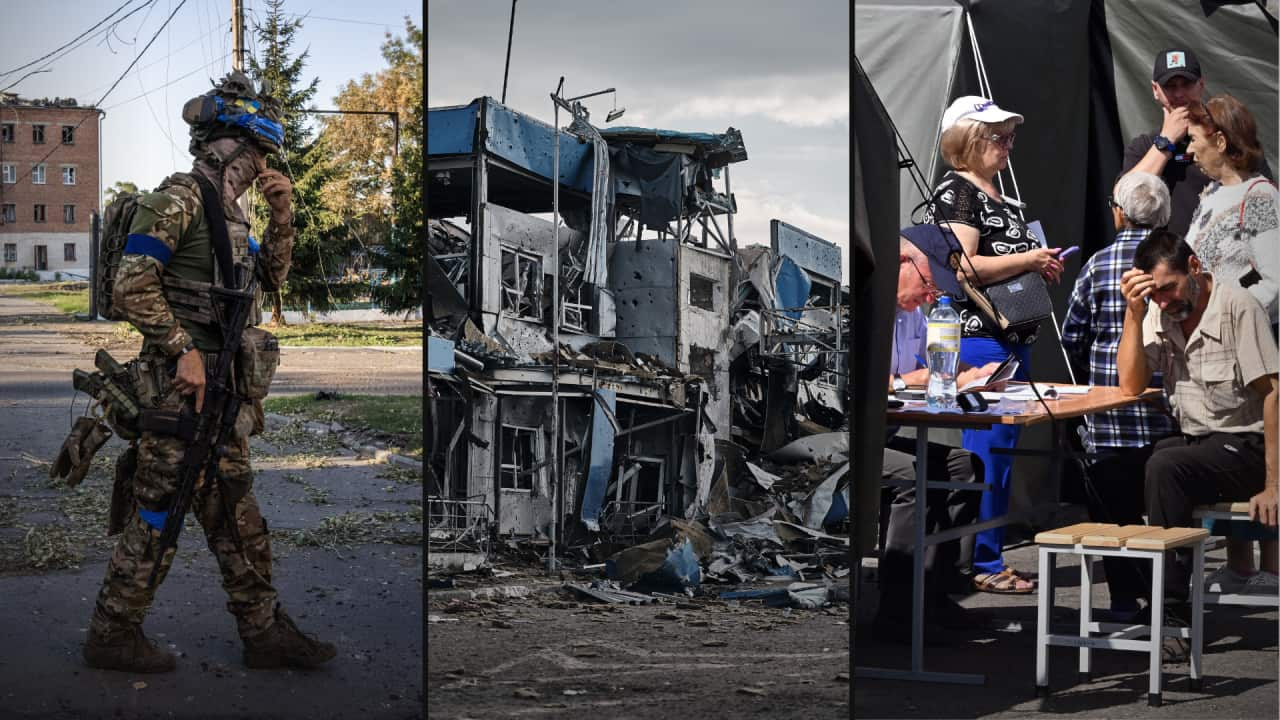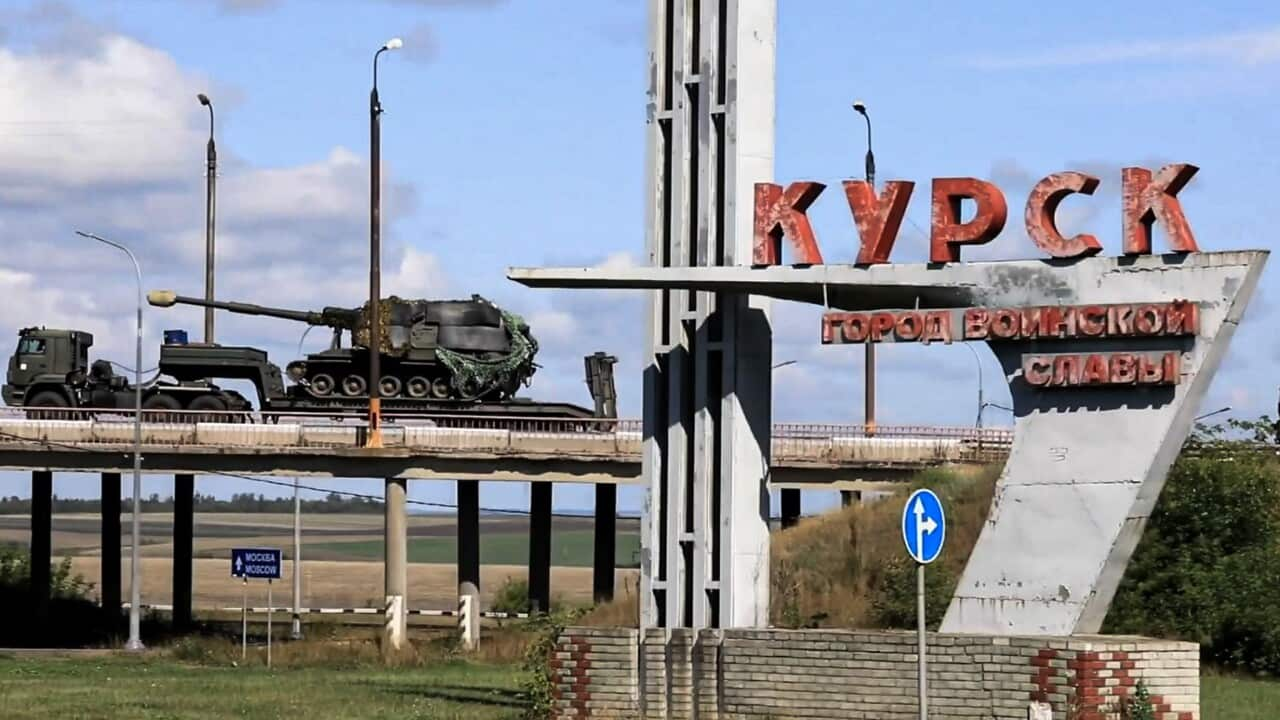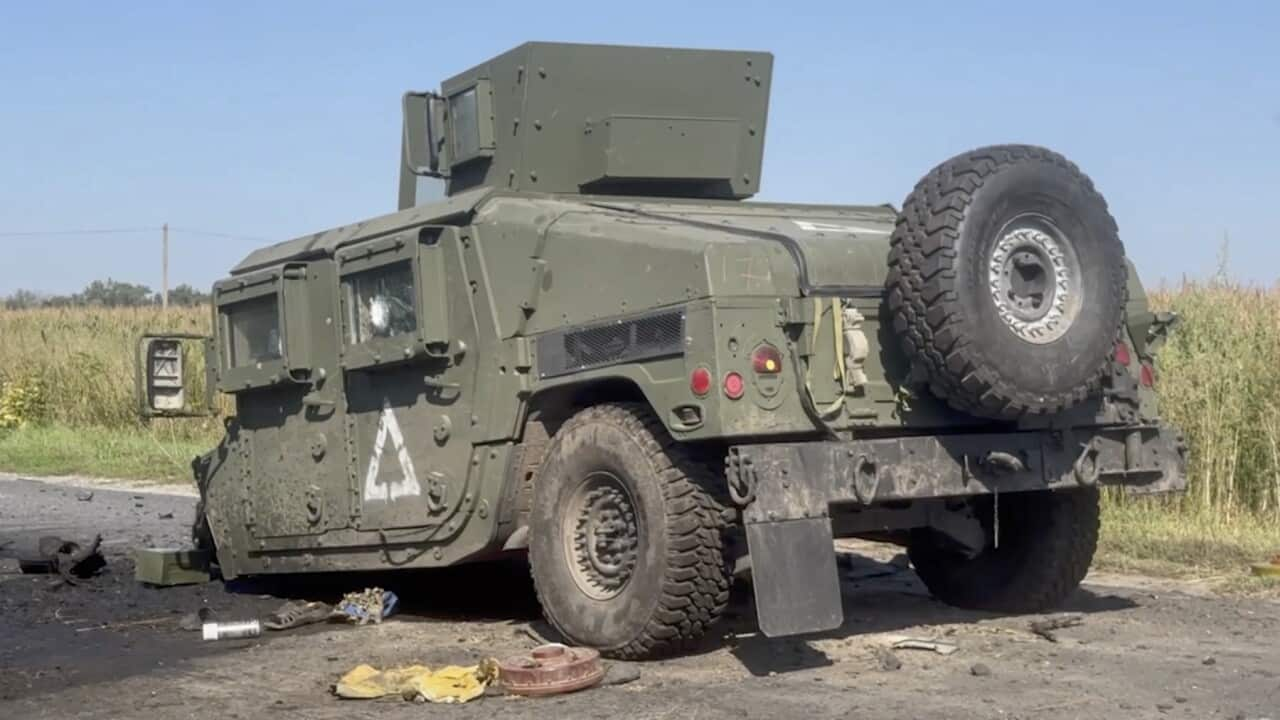It's been two weeks since Ukrainian troops pushed into Russia's Kursk province and launched a surprise attack on the town of Sudzha.
The move, which comes more than two years after Moscow launched its full-scale invasion of Ukraine, is the first time Russian territory has been under occupation since World War Two.
Russia controls 18 per cent of Ukrainian territory and has been gradually advancing recently.
Ukrainian President Volodymyr Zelenskyy has said the operation in Russia seeks to "destroy as much Russian war potential as possible" and to create a "buffer zone" in the territory.
"The world sees that everything in this war depends only on courage — our courage, the courage of our partners. On brave decisions for Ukraine, on courage in supporting Ukraine," Zelenskyy said on Tuesday.
What has Ukraine done in the Kursk region?
Ukraine says it has captured more than 1250 square kilometres of Russian territory, including 92 settlements, since bursting across the border on 6 August in one of its most audacious and unexpected counter-attacks of the war.
It was not possible to independently verify what Ukrainian forces effectively control, the Associated Press reported.
After the initial attack on the Kursk region, Ukraine blew up and destroyed all three bridges over the Seym River.
The first bridge, located in the village of Glushkovo, was destroyed on Friday.

On Friday, the first strategically important bridge over the Seym River was destroyed by Ukrainian troops as they continued their incursion into the Kursk region. Credit: AP
The third bridge, located in the village of Karyzh, was said to have fallen on Sunday night.
These bridges were essential in transporting supplies to Russian troops defending the area. Russia now has to rely on makeshift pontoon bridges to receive artillery and military equipment.

Ukraine has destroyed three bridges in Kursk that Russia uses to transport supplies to its troops. Credit: SBS News
More than 121,000 Russian civilians living in the border districts of the Kursk region have been evacuated from the area.
How has Russia responded?
Nikolai Patrushev, an influential aide to Russian President Vladimir Putin, accused the West and the NATO alliance of helping Ukraine carry out its incursion plan.
The United States has denied the accusation, but Patrushev — without offering any evidence — said in an interview with the Izvestia newspaper: "Without their participation and direct support, Kyiv would not have ventured into Russian territory."
Russia vowed to crush the incursion but has so far refused to move troops from Donbas in Ukraine to Kursk. Donbas is hundreds of kilometres south of the Kursk region.

Russian President Vladimir Putin holds a meeting following a cross-border attack by Ukrainian armed forces into Russian territory. Source: EPA / Gavriil Grigorov/SPUTNIK/KREMLIN POOL
Associate professor Matthew Sussex of the Australian National University's Strategic and Defence Studies Centre told SBS News: "Russians have sent veiled threats of retribution. What that comes in the form of, we don't know; but typically, the way Russia reacts to perceived insults, it tends to do it in a very bloody fashion. It tends to target civilians. So that could well be the response."
Sussex said Ukrainians had been suffering this "bloody" response throughout the war.
"I think there's a sort of grim fatalism that Moscow will retaliate, but that's been overshadowed by the gains of Ukraine's armed forces," he said.
Russia's military on Tuesday said its forces have thwarted attempted Ukrainian attacks on four settlements in its western Kursk region and taken control of what it described as the strategic logistics hub of Niu-York in eastern Ukraine.
The capture of Niu-York, if confirmed by Ukraine, would mark another advance in Russia's grinding drive to capture the entire Donetsk region.
Is Ukraine trying to seize more territory?
It appears so.
Ukrainian troops have used kamikaze drones to destroy Russia's makeshift pontoon bridges between the villages of Zvannoe and Glushkovo.
On Tuesday, the military reportedly captured the Russian village of Martynovka, about 10km north-east of Sudzha, as a video of Ukrainian soldiers firing at Russian troops from a Marder infantry fighting vehicle emerged.
What could the incursion mean for the war?
Sussex said the incursion has given Ukrainian troops a "sizeable morale boost at a time when war fatigue has set in."
"The fact that they have seized territory in Russia is something no one was expecting — least of all, the Ukrainians, except of course those who were planning it," he said.
"It affects the war in that Russia will have to pull troops from somewhere in order to expel Ukrainians from their territory and to guard the border because it's been very loosely guarded. That would mean a number of troops would be unavailable to continue the offensive in Ukraine."
Ukraine holding on to the Russian territories they now control may prove difficult. However, if they are successful, Sussex believes it will give them a leg-up in peace negotiations — should there be calls for talks in the future.
"I think the incursion changes the direction of where the war was going, which was exhaustion for the Ukrainians. I think this will keep them in the fight for a while, and it shows once again that the Russian forces aren't all that they're cracked up to be," he said.

The American and Ukrainian flags wave in the wind outside of the Capitol. Source: AP / Mariam Zuhaib
"Ukraine is showing what it can do. It's saying 'Don't make us fight with one hand tied behind our backs.' This has been a constant complaint from Kyiv because the United States won't allow it to use long-range weapons on Russia which then allows Russia to strike Ukraine with impunity."
With reporting by the Associated Press and Reuters via the Australian Associated Press.











